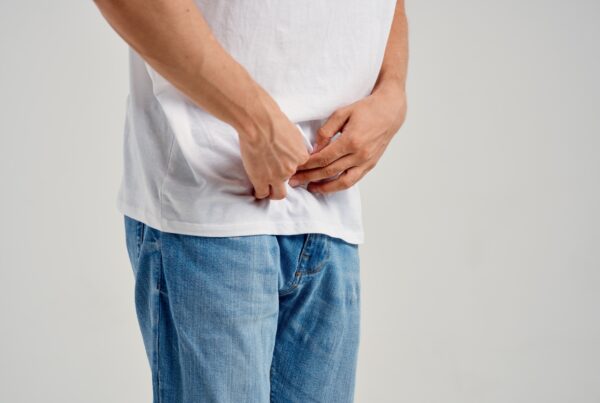A vasectomy is a safe and effective form of permanent birth control for men. While the procedure itself is straightforward and minimally invasive, proper rest and recovery are essential to ensure the best possible outcome. Understanding how long to recover from a vasectomy can help you avoid complications and get back to your routine smoothly. This guide will walk you through the recommended vasectomy recovery time, the importance of rest, and tips to make your recovery period as comfortable as possible.
General Rest Guidelines After a Vasectomy
Rest is a critical part of vasectomy recovery. Although most men can return home the same day as the procedure, it’s important to plan for a period of reduced activity.
- Immediate Post-Procedure Rest: Plan to rest for at least 24 to 48 hours after your vasectomy. During this time, avoid any physical exertion, heavy lifting, or activities that could strain the surgical area.
- First 48 Hours: Lie down as much as possible during the first two days. Use this time to relax and allow your body to begin the healing process.
- Activity Limitations: Avoid sexual activity, exercise, and heavy lifting for at least one week. Most men can return to light activities, such as walking or desk work, within 24 to 48 hours.
- Extended Rest for Certain Activities: Refrain from activities like cycling, running, or contact sports for at least two weeks to minimize the risk of complications.
By adhering to these general rest guidelines, you can significantly reduce the risk of discomfort or post-procedure complications.
When Can You Return to Normal Activity Post-Vasectomy?
The timeline for returning to normal activities varies depending on individual healing rates and the nature of the activities.
- Work: If your job involves light duties or desk work, you can typically return within two days. For physically demanding jobs, consider taking a week off.
- Exercise: Light exercises such as walking can usually resume after three days. Strenuous workouts, weightlifting, or sports should be avoided for at least two weeks.
- Sexual Activity: It’s recommended to wait a minimum of one week before resuming sexual activity. Even after resuming, use protection until follow-up tests confirm the absence of sperm.
- Driving: Driving after a vasectomy is generally safe if you had local anesthesia, but you should avoid it for 24 hours if sedation or general anesthesia was used. Ensure you’re comfortable sitting upright and not experiencing significant pain or drowsiness before getting behind the wheel. If you’re taking prescription pain medication, avoid driving until you no longer need it to ensure your reflexes and judgment aren’t impaired.
Why Rest Matters
Taking the time to rest after vasectomy is essential for proper healing and to avoid complications. Rest plays a crucial role in minimizing swelling, preventing infection, and reducing the risk of hematoma (blood pooling under the skin).
Neglecting proper rest can lead to discomfort, prolonged recovery, or more serious issues that may require medical attention. Rest also supports the body’s natural healing process, ensuring the vasectomy is effective and complication-free. By following the recommended recovery guidelines, you can return to normal life sooner with fewer risks.
Signs You Need More Rest
Even if you feel fine, your body may need more time to heal. Pay attention to the following signs that indicate you might need to rest longer:
- Swelling or Bruising: Mild swelling and bruising are normal, but if they persist or worsen after a few days, take additional rest.
- Persistent Pain: Some discomfort is expected, but persistent or severe pain could be a sign of overexertion.
- Bleeding or Discharge: Any bleeding or discharge from the surgical site is a sign to slow down and consult your healthcare provider.
- Feeling Fatigued: Fatigue is your body’s way of signaling that more recovery time is needed.
- Increased Sensitivity: If the area becomes increasingly sensitive or tender, limit activity and apply ice to reduce inflammation.
By listening to your body and taking these signs seriously, you can prevent setbacks and ensure a smoother recovery process.
Tips for a Comfortable Vasectomy Recovery
Making small adjustments to your routine can greatly enhance your comfort and speed up recovery. Here are a few practical tips:
- Use Ice Packs: Apply ice packs to the groin area for 10 to 20 minutes at a time, with breaks in between, to reduce swelling and discomfort.
- Wear Supportive Underwear: Tight-fitting underwear or athletic support helps minimize movement and provides additional comfort.
- Stay Hydrated and Eat Well: Proper nutrition and hydration support your body’s healing process.
- Avoid Strain: When getting up from a seated or lying position, do so slowly and carefully to avoid sudden pressure on the surgical area.
- Take Pain Relievers as Directed: Over-the-counter pain relievers, such as ibuprofen, can help manage discomfort. Always follow your doctor’s instructions.
- Keep the Area Clean: Gently clean the surgical area as instructed and avoid submerging it in water (such as baths or swimming) for at least a week.
- Limit Movement: Reduce unnecessary walking or standing during the first 48 hours. Use this time to catch up on reading, movies, or light activities that don’t require physical exertion.
Following these tips can make a significant difference in your vasectomy recovery time, allowing you to heal faster and return to normal life with minimal discomfort.
The Importance of Rest for a Smooth Vasectomy Recovery
Resting after a vasectomy is not just about avoiding pain—it’s about ensuring the procedure’s long-term success. By prioritizing rest and following these guidelines, you can recover quickly and confidently, knowing you’ve taken the right steps for your health and well-being. Taking the time to care for yourself in the days following the procedure sets the foundation for a smooth transition back to your normal routine. If you have any concerns during your recovery, don’t hesitate to reach out to your healthcare provider for guidance.





